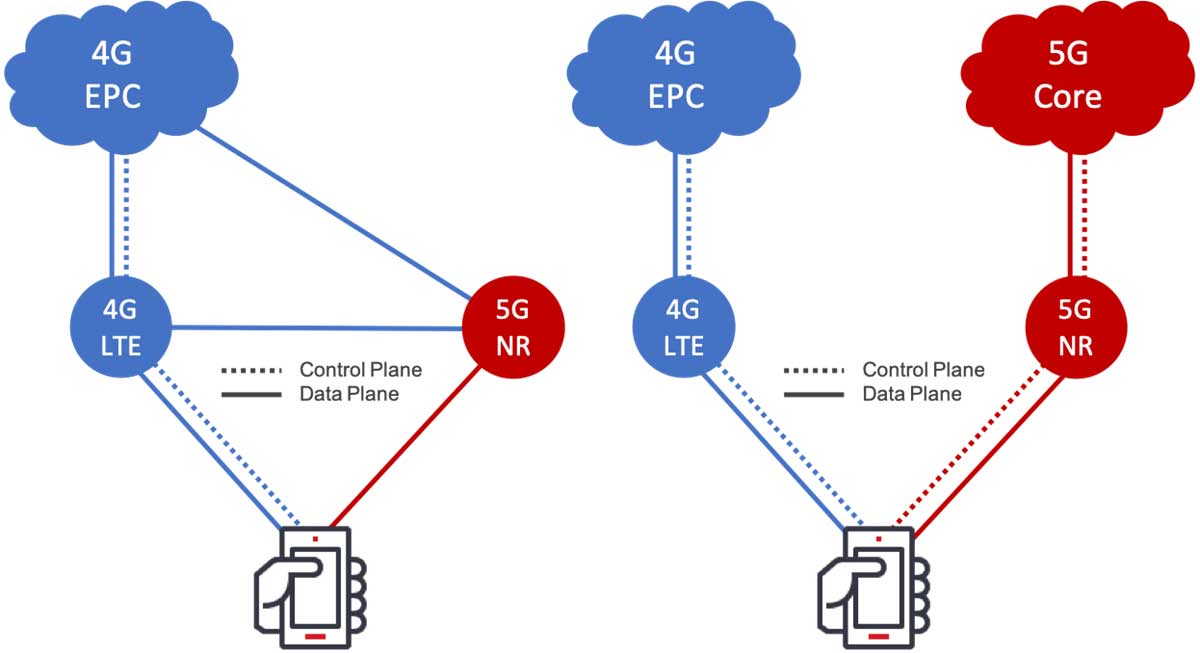Telstra standalone 5G is live
Telstra’s mobile network is now ready for Standalone (SA) 5G. The telco’s 5G network was initially launched using 4G infrastructure, and the latest announcement means Telstra’s 5G mobile network now uses a 5G core.
Like the two other major telcos in Australia – Optus and Vodafone – Telstra’s use of a 4G core helped launch their commercial 5G network quicker. The three major telcos chose the quick 5G-launch-through-4G-infrastructure approach as outlined by 3GPP.
This latest development has a lot of implications for the 5G sector in Australia. A fully 5G SA network is a big deal, mostly for enterprises looking to tap into the full potential of the technology for larger, industrial applications. But consumers benefit as well.
Two types of 5G: Non-standalone (NSA) 5G and Standalone (SA) 5G
We’re sure you’ve heard about 5G – who hasn’t? But hearing about it is only the tip of the ice berg. For instance, it isn’t widely known that there are two types of 5G networks – Non-standalone (NSA) 5G and Standalone (SA) 5G.
Non-standalone 5G relies on 4G core while standalone 5G uses a 5G core. src
Getting into the technicalities of these terms could take a while, so let’s stick to the basics:
- Non-standalone 5G relies on a 4G LTE-core. That is, your current LTE infrastructure helps launch the 5G network. That’s what we’ve been using here in Australia. For the most part, it does the job – faster speeds than 4G and higher bandwidth. But it’s not a full-fledged 5G network because it doesn’t give you the lowest latency possible. Telcos launched their 5G networks using this method in an effort to enter the market quicker and save costs.
- Standalone 5G, on the other hand, uses a 5G-core. It requires 5G standalone devices, which currently aren’t available in Australia. Some describe 5G SA as the real 5G network because, in addition to greater capacity, it provides that ultra low latency we’ve heard about for years. That opens the door to a range of new 5G use cases, especially those that are industrial in nature.
What does Telstra’s Standalone 5G mean for businesses (enterprises)?
Enterprises are the primary beneficiaries of standalone 5G. The ultra low latency and higher bandwidth capacity opens the door to IoT and smart applications for machinery that require almost-immediate response time.
According to Telstra’s group executive networks and IT Nikos Katinakis, “The new standalone capability will be able to support new enterprise services that power a branch office running multiple applications and services. It could also help new industry vertical use cases such as manufacturing and remote-controlled operations.”
Enterprises looking to explore 5G and go wireless might be discouraged by the NSA option because of the 4G core. It would seem counter-productive to invest in NSA 5G, considering the costs and complexities associated with such a dual 4G-5G system. An SA 5G network makes the investment worthwhile and opens the door to new opportunities in the mobile network space, such as smart factories.
And as far as businesses are concerned, there are benefits for service providers as well. Because standalone 5G is more attractive to enterprises than NSA 5G, it opens the door to new services to market. Standalone 5G also boosts network slicing capabilities, where the mobile network infrastructure can be “sliced” into different customizable parts that fit the needs of each enterprise or business.
What does Telstra’s standalone 5G mean for consumers?
For consumers, this development isn’t much of a big deal – at least not right now. Telstra’s standalone 5G will initially be available to enterprises and developers only, not consumers.
However, the technology will eventually become available to consumers, and they’ll be able to experience 5G as initially advertised over the years – much faster connections, higher capacity, and low-to-zero latency.
Whether the average consumer will be able to spot the difference between current NSA 5G and SA 5G is a different question altogether. The answer is likely No, considering most mobile network users are simply streaming entertainment content and using social media over their networks – tasks that are already blazing fast.
But other consumers such as heavy online gamers should notice improvements in response time. An ultra-low latency mobile network will do that, and that’s just part of what SA 5G will bring to the table.
In summary
With Telstra’s announcement that it is now standalone 5G ready, the telco now leads the pack – Optus and Vodafone remain NSA 5G networks. Although no SA 5G devices are currently available, Telstra is currently testing capable devices and expects them to begin rolling out towards the end of this year 2020.
For enterprises, that opens the door to a number of smart and IoT applications in the industrial sector. That also expands opportunities for the service provider to market to those enterprises, and even explore technologies like network slicing for more efficient data charging.
